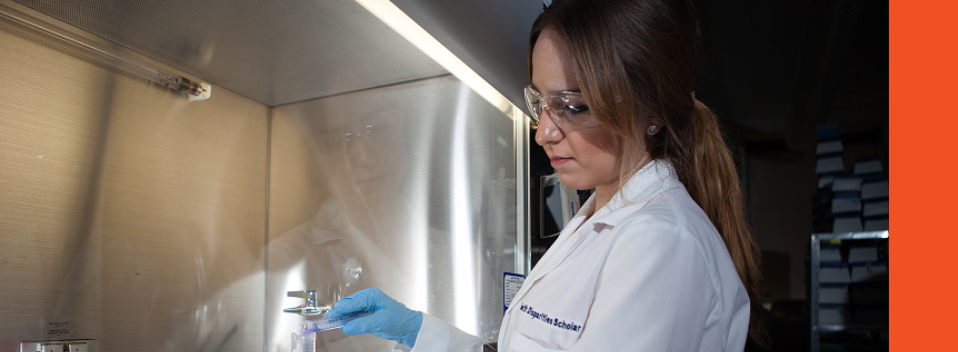
Health & Biomedical Sciences Faculty Publications and Presentations
Document Type
Article
Publication Date
2-2021
Abstract
Glaucoma is a neurodegenerative disease in which the retinal ganglion cell axons of the optic nerve degenerate concomitant with synaptic changes in the retina, leading finally to death of the retinal ganglion cells (RGCs). Electrical stimulation has been used to improve neural regeneration in a variety of systems, including in diseases of the retina. Therefore, the focus of this study was to investigate whether transcorneal electrical stimulation (TES) in the DBA2/J mouse model of glaucoma could improve retinal or optic nerve pathology and serve as a minimally invasive treatment option. Mice (10 months-old) received 21 sessions of TES over 8 weeks, after which we evaluated RGC number, axon number, and anterograde axonal transport using histology and immunohistochemistry. To gain insight into the mechanism of proposed protection, we also evaluated inflammation by quantifying CD3+ T-cells and Iba1+ microglia; perturbations in metabolism were shown via the ratio pAMPK to AMPK, and changes in trophic support were tested using protein capillary electrophoresis. We found that TES resulted in RGC axon protection, a reduction in inflammatory cells and their activation, improved energy homeostasis, and a reduction of the cell death-associated p75NTR. Collectively, the data indicated that TES maintained axons, decreased inflammation, and increased trophic factor support, in the form of receptor presence and energy homeostasis, suggesting that electrical stimulation impacts several facets of the neurodegenerative process in glaucoma.
Recommended Citation
Jassim, A. H., Cavanaugh, M., Shah, J. S., Willits, R., & Inman, D. M. (2021). Transcorneal Electrical Stimulation Reduces Neurodegenerative Process in a Mouse Model of Glaucoma. Annals of biomedical engineering, 49(2), 858–870. https://doi.org/10.1007/s10439-020-02608-8
Publication Title
Annals of biomedical engineering
DOI
https://doi.org/10.1007/s10439-020-02608-8


Comments
PMC Copyright notice Terms of use and reuse: academic research for non-commercial purposes, see here for full terms. https://www.springer.com/aam-terms-v1 Publisher's Disclaimer